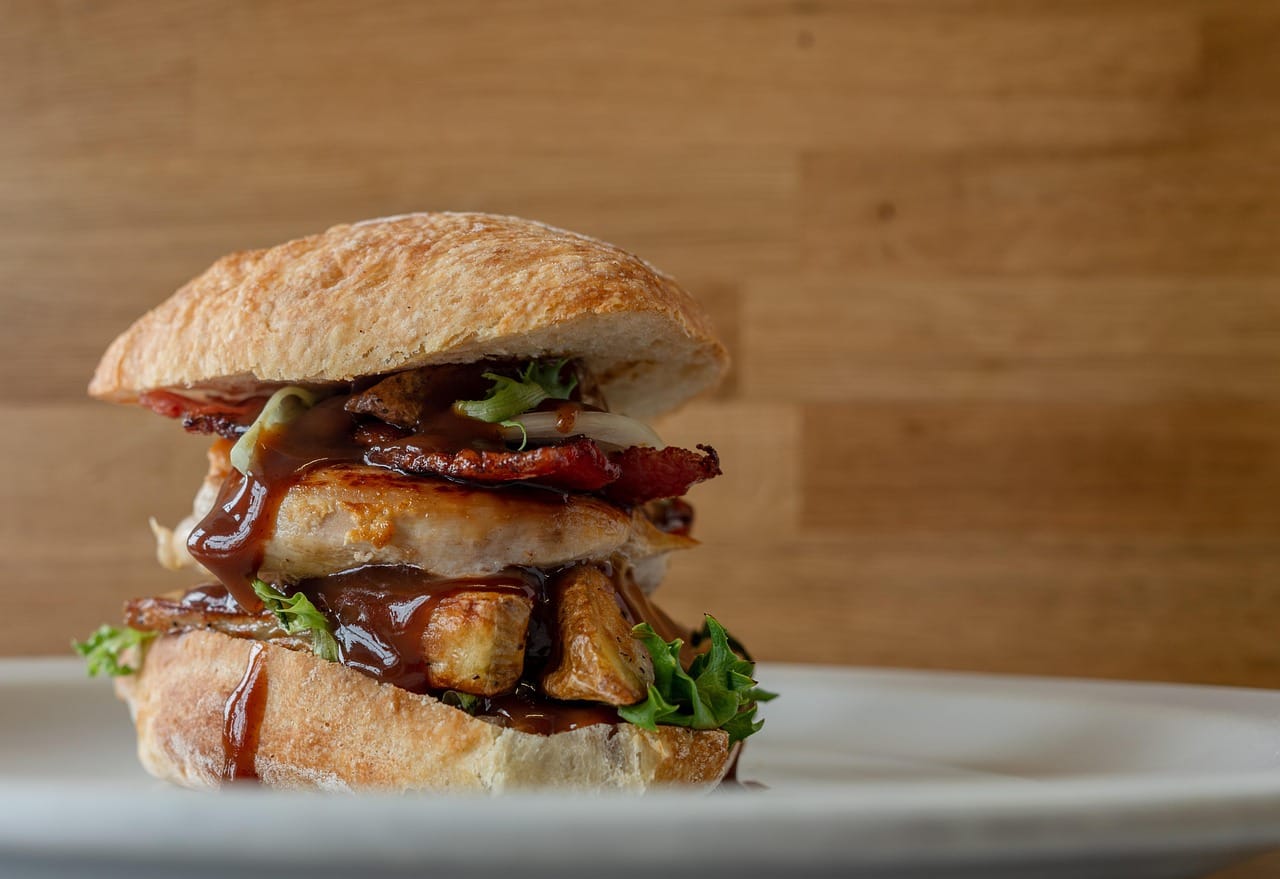Red velvet cake, with its captivating hue and velvety texture, has captured hearts and palates for generations. More than just a dessert, it’s a symbol of celebration, comfort, and a touch of mystery. But what exactly makes red velvet cake so irresistible? Join us as we delve into the fascinating history, science, and artistry behind this beloved confection, exploring its secrets and providing you with all the knowledge you need to bake (or simply appreciate) the perfect red velvet cake.
The Alluring History of Red Velvet Cake
Early Origins and the “Velvet” Trend
Red velvet cake’s history is shrouded in some delightful culinary lore. While the exact origins are debated, it’s generally believed that the cake emerged in the late 19th or early 20th century. The term “velvet” referred to the soft, fine texture achieved through the use of certain ingredients, not necessarily the color red.
Cakes labeled as “velvet” cakes were popular during the Victorian era. The “velvet” texture was often achieved by using cake flour, creamed butter and sugar, and sometimes buttermilk or sour milk. These ingredients helped break down the gluten in the flour, resulting in a more tender crumb.
The Red Color Connection
The distinctive red color wasn’t initially intentional. The reaction between the acidic ingredients like buttermilk and vinegar with the cocoa powder (unprocessed cocoa in older recipes) created a reddish hue due to the natural anthocyanins in the cocoa. During the Great Depression, bakers sometimes used beet juice to enhance the color and add moisture, stretching ingredients further.
It wasn’t until the 20th century, particularly around the 1940s and 1950s, that red food coloring became more widely used to intensify the color, transforming red velvet into the vibrant treat we recognize today.
Adams Extract and the Waldorf Astoria Legend (Debunked)
Two popular, but largely unsubstantiated, stories surround the popularization of red velvet cake:
- Adams Extract Company: Some claim that the Adams Extract Company, known for its food colorings and flavorings, played a significant role in popularizing red velvet cake by including the recipe on promotional materials.
- The Waldorf-Astoria Hotel: Another myth suggests that a guest at the Waldorf-Astoria Hotel in New York City fell in love with the cake and requested the recipe. The hotel allegedly charged her an exorbitant fee, leading her to spread the recipe in revenge. However, historical evidence doesn’t support this story.
Regardless of the exact origins, red velvet cake became a Southern staple and gradually gained nationwide popularity.
The Science Behind the Velvet
The Importance of Buttermilk and Vinegar
Buttermilk and vinegar are key components that contribute significantly to the unique flavor and texture of red velvet cake. Their acidity plays a crucial role in several ways:
- Tenderizing the gluten: The acidity weakens the gluten strands in the flour, resulting in a more tender and delicate crumb.
- Activating baking soda: The acidity reacts with the baking soda, creating carbon dioxide gas that helps the cake rise and become light and airy.
- Enhancing flavor: Buttermilk adds a subtle tang that complements the sweetness of the cake, while vinegar contributes a slight acidity that balances the overall flavor profile.
The Role of Cocoa Powder
Cocoa powder is another vital ingredient. It’s essential to use unsweetened cocoa powder. Here’s why:
- Adds subtle chocolate flavor: It provides a hint of chocolate without overpowering the other flavors.
- Contributes to the reddish hue: As mentioned earlier, cocoa powder reacts with acidic ingredients to enhance the red color, especially when natural cocoa powder is used.
- Contributes to moisture: Cocoa powder helps to retain moisture, preventing the cake from drying out.
The Magic of Cream Cheese Frosting
Classic red velvet cake is almost always paired with cream cheese frosting. The tangy cream cheese complements the slightly acidic cake beautifully. The acidity cuts through the sweetness, creating a balanced and irresistible combination.
Baking the Perfect Red Velvet Cake: A Step-by-Step Guide
Gathering Your Ingredients: Quality Matters
Using high-quality ingredients is crucial for achieving the best results. Here’s a breakdown of the essential ingredients:
- Cake flour: Provides a softer, more delicate crumb than all-purpose flour.
- Unsweetened cocoa powder: Use a good quality brand for the best flavor.
- Buttermilk: Essential for the tangy flavor and tender texture.
- Vegetable oil: Adds moisture to the cake.
- Eggs: Bind the ingredients together and add richness.
- Granulated sugar: Provides sweetness and contributes to the cake’s texture.
- Baking soda: The leavening agent that helps the cake rise.
- Vinegar: Reacts with baking soda to create carbon dioxide and tenderizes the gluten.
- Red food coloring: Use gel food coloring for a more vibrant and concentrated color. Liquid food coloring can sometimes affect the batter’s consistency.
- Vanilla extract: Enhances the overall flavor.
- Cream cheese: The base for the classic frosting. Use full-fat cream cheese for the best flavor and texture.
- Butter: Adds richness and flavor to the frosting.
- Powdered sugar: Sweetens and thickens the frosting.
The Baking Process: Tips and Tricks
Follow these tips for a successful baking experience:
- Cream together the butter, oil, and sugar: This incorporates air into the batter, which helps create a light and fluffy cake.
- Add eggs one at a time: Make sure each egg is fully incorporated before adding the next.
- Alternate adding dry and wet ingredients: This prevents the gluten from developing too much, resulting in a more tender cake. Start and end with the dry ingredients.
- Don’t overmix the batter: Overmixing can lead to a tough cake. Mix until just combined.
- Use cake strips: Wrapping cake strips around the cake pans helps the cakes bake evenly and prevents a dome from forming in the center.
- Cool the cakes completely before frosting: This prevents the frosting from melting.
Cream Cheese Frosting Mastery: Achieving Perfection
Cream cheese frosting can be tricky to get right. Here are some tips for achieving perfect consistency:
- Use cold cream cheese and butter: Start with cold ingredients, then let them soften slightly at room temperature before mixing. This helps to prevent the frosting from becoming too soft or runny.
- Beat the cream cheese and butter until smooth: Make sure there are no lumps before adding the powdered sugar.
- Add powdered sugar gradually: This helps to prevent the frosting from becoming too sweet or stiff.
- Don’t overbeat the frosting: Overbeating can cause the frosting to become too soft or runny.
- Refrigerate the frosting: Refrigerating the frosting for at least 30 minutes before frosting the cake helps to firm it up and makes it easier to work with.
Variations and Creative Twists
Red Velvet Cupcakes and Loaf Cakes
Red velvet cake lends itself beautifully to various formats:
- Cupcakes: Perfect for individual servings and easy to decorate. Reduce the baking time accordingly.
- Loaf Cakes: A more casual and easy-to-slice option, ideal for everyday enjoyment. Adjust baking time based on loaf pan size.
Flavor Combinations
Experiment with different flavor combinations to elevate your red velvet cake:
- Chocolate chips: Add semi-sweet or dark chocolate chips to the batter for a richer chocolate flavor.
- Nuts: Fold in chopped pecans or walnuts for added texture and flavor.
- Coffee: Add a teaspoon or two of instant coffee powder to the batter for a more complex flavor.
- Spices: A pinch of cinnamon or nutmeg can add warmth and depth.
Frosting Alternatives
While cream cheese frosting is the classic choice, consider these alternatives:
- Ermine frosting: A light and fluffy frosting made with a cooked flour paste. It’s less sweet and tangy than cream cheese frosting.
- Swiss meringue buttercream: A silky smooth and buttery frosting that’s less sweet than American buttercream.
- Whipped cream: A light and airy option for a more delicate cake.
Troubleshooting Common Red Velvet Cake Issues
Dry Cake
- Possible cause: Overbaking, using too much flour, not enough liquid.
- Solution: Use cake strips to ensure even baking, measure ingredients accurately, and consider adding a bit more oil or buttermilk.
Dense Cake
- Possible cause: Overmixing the batter, not enough leavening agent, using the wrong type of flour.
- Solution: Gently fold the dry ingredients into the wet ingredients, ensure baking soda is fresh, and use cake flour.
Runny Frosting
- Possible cause: Overbeating the frosting, using softened butter and cream cheese that were too warm, too much liquid.
- Solution: Use cold cream cheese and butter, add powdered sugar gradually, and refrigerate the frosting to firm it up.
Cake Sinking in the Middle
- Possible cause: Underbaking, oven temperature not accurate, too much leavening agent.
- Solution: Bake until a toothpick inserted into the center comes out clean, check oven temperature with an oven thermometer, and measure baking soda accurately.
Conclusion
Red velvet cake is more than just a dessert; it’s a culinary experience steeped in history, science, and a touch of magic. Understanding the role of each ingredient and mastering the baking techniques are key to creating a truly exceptional cake. Whether you’re a seasoned baker or a novice in the kitchen, armed with this knowledge, you can confidently embark on a red velvet adventure and delight your taste buds (and those of your loved ones) with this timeless classic. So, go ahead, grab your apron, and bake your way to red velvet perfection!




